
Shandur Top: The Roof of the World
Discover Shandur Top: A High-Altitude Paradise with Stunning Views, Annual Polo Festival, and Endless Adventure Opportunities in Pakistan's Gilgit-Baltistan.
Shandur Top, often referred to as the 'Roof of the World,' is a mesmerizing plateau located at an impressive altitude of 12,200 feet in Pakistan's Gilgit-Baltistan region. This breathtaking destination is renowned for its annual Shandur Polo Festival, which attracts visitors from around the globe to witness high-altitude polo matches amidst stunning natural beauty. The journey to Shandur Top itself is an adventure, with winding roads offering panoramic views of snow-capped peaks, lush valleys, and serene rivers. Once you reach the top, you'll be greeted by a vast expanse of green meadows, dotted with wildflowers and surrounded by towering mountains. The pristine Shandur Lake, located nearby, adds to the charm of this enchanting location. Apart from the polo festival, Shandur Top offers ample opportunities for trekking, camping, and exploring the local culture. The hospitable locals, with their rich traditions and warm hospitality, make the experience even more memorable. Whether you're a nature enthusiast, an adventure seeker, or simply looking for a peaceful retreat, Shandur Top promises an unforgettable experience.
Local tips in Shandur Top
- Visit in July to experience the Shandur Polo Festival and witness traditional polo matches at the world's highest polo ground.
- Pack warm clothing, even in summer, as temperatures can drop significantly, especially at night.
- Hire a local guide for trekking to explore hidden trails and learn about the region's unique flora and fauna.
- Bring a good camera to capture the stunning landscapes and vibrant cultural moments.
- Ensure your vehicle is equipped for mountain travel, as the roads can be challenging and require careful navigation.
Shandur Top: The Roof of the World
Shandur Top, often referred to as the 'Roof of the World,' is a mesmerizing plateau located at an impressive altitude of 12,200 feet in Pakistan's Gilgit-Baltistan region. This breathtaking destination is renowned for its annual Shandur Polo Festival, which attracts visitors from around the globe to witness high-altitude polo matches amidst stunning natural beauty. The journey to Shandur Top itself is an adventure, with winding roads offering panoramic views of snow-capped peaks, lush valleys, and serene rivers. Once you reach the top, you'll be greeted by a vast expanse of green meadows, dotted with wildflowers and surrounded by towering mountains. The pristine Shandur Lake, located nearby, adds to the charm of this enchanting location. Apart from the polo festival, Shandur Top offers ample opportunities for trekking, camping, and exploring the local culture. The hospitable locals, with their rich traditions and warm hospitality, make the experience even more memorable. Whether you're a nature enthusiast, an adventure seeker, or simply looking for a peaceful retreat, Shandur Top promises an unforgettable experience.
When is the best time to go to Shandur Top?
Iconic landmarks you can’t miss
Shandur National Park
Discover the untamed beauty of Shandur National Park, home to the world's highest polo ground and stunning landscapes in Pakistan's northern region.

Shandur Pass
Discover the breathtaking beauty and vibrant culture of Shandur Pass, Pakistan's majestic mountain pass known for its stunning landscapes and rich traditions.
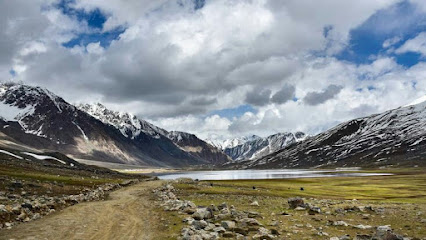
Shandur Lake (Pakistan)
Discover the breathtaking beauty of Shandur Lake, a high-altitude paradise in Khyber Pakhtunkhwa, perfect for adventure seekers and nature lovers.
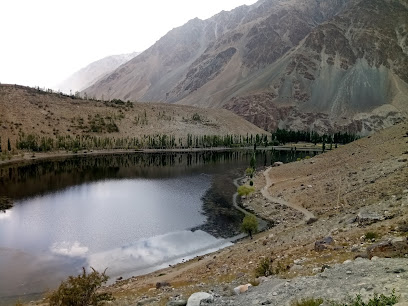
Chitral Shandoor Top Pakistan
Explore the breathtaking landscapes and rich culture of Chitral Shandoor Top, a hidden gem in Pakistan's Khyber Pakhtunkhwa region.
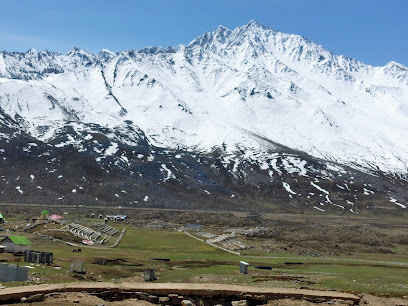
Unmissable attractions to see
Shandur National Park
Experience the breathtaking beauty and rich culture of Shandur National Park, a serene escape in the heart of Pakistan's majestic mountains.
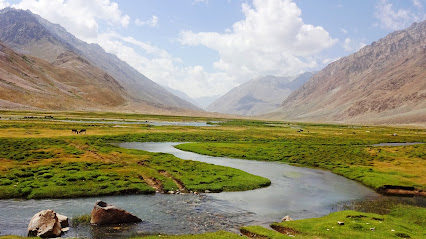
Kalash Valley
Discover the mesmerizing Kalash Valley, a cultural treasure in Pakistan, where vibrant traditions meet breathtaking natural beauty.

Mastuj Chitral
Discover the breathtaking beauty and rich culture of Mastuj Chitral, a hidden gem in Pakistan's majestic Himalayas.
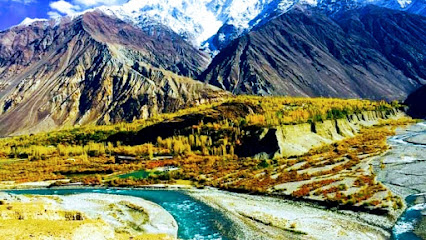
Madak Lasht Chitral
Explore the stunning landscapes and rich culture of Madaklasht, Chitral, a hidden gem in Pakistan perfect for nature lovers and adventure seekers.

Shandur Lake (Pakistan)
Discover the breathtaking beauty of Shandur Lake in Khyber Pakhtunkhwa, Pakistan—a serene escape for nature lovers and adventure seekers alike.
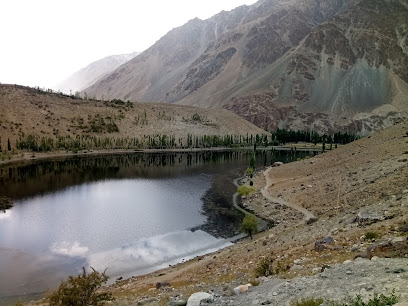
Golain Jungle
Explore Golain Jungle: A serene national forest in Chitral, Pakistan, perfect for family outings, hiking, and nature photography.

Chinaar House
Explore the breathtaking beauty of Chinaar House in Chitral, Pakistan, where nature and culture blend seamlessly for an unforgettable experience.
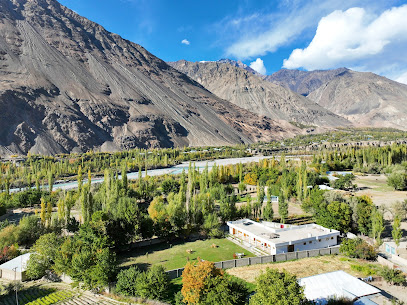
Shehrisham markhor view point
Experience the breathtaking beauty and tranquility at Shehrisham Markhor View Point, a hidden gem in Khyber Pakhtunkhwa, Pakistan.

Kuragh
Explore the serene beauty and rich cultural heritage of Kuragh, a hidden gem in the Chitral region of Pakistan, perfect for nature lovers and adventurers.
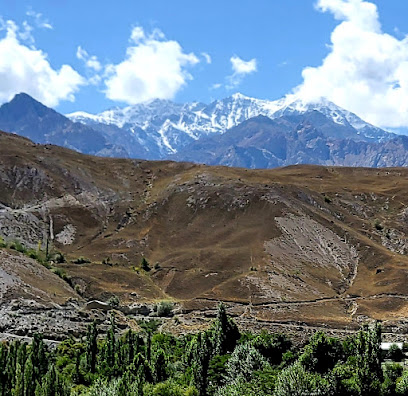
Suspension Bridge Phander
Explore the breathtaking Suspension Bridge in Phander, Gilgit-Baltistan, where adventure meets stunning natural beauty amidst the majestic mountains.

Terrace of Phander Valley
Explore the breathtaking Terrace of Phander Valley, a serene escape in Gilgit-Baltistan offering stunning landscapes and rich cultural experiences.
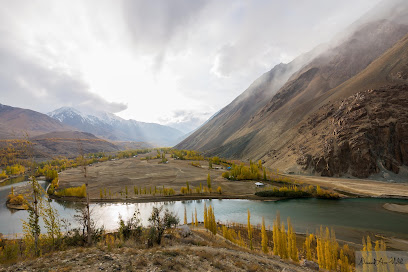
Golook top Morder
Experience the breathtaking views and serene landscapes of Golook Top, a hidden gem in Upper Chitral, Khyber Pakhtunkhwa, Pakistan.
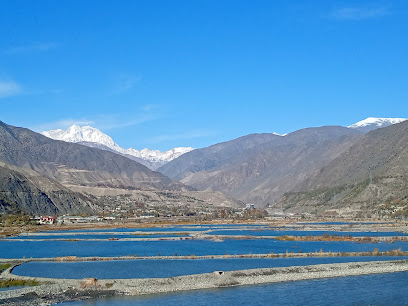
Kesu
Explore Kesu, a stunning tourist attraction in Chitral, where nature's beauty meets rich cultural heritage, perfect for every traveler.
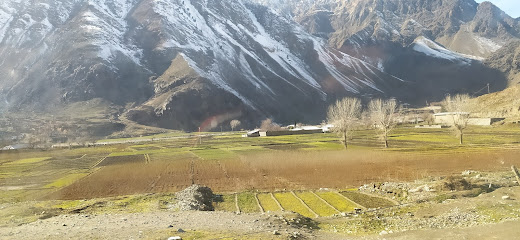
Phander Naseer Wooden Bridge
Discover the beauty of Phander Valley at the Phander Naseer Wooden Bridge, a stunning landmark perfect for photography and cultural experiences.
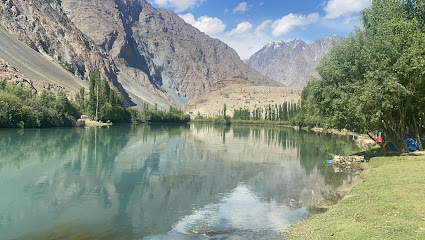
Gorshy Lake
Discover the breathtaking beauty of Gorshy Lake in Kumrat Valley, a hidden gem perfect for nature lovers and adventure enthusiasts seeking tranquility.

Essential places to dine
Shandur Hotel & Restaurant
Discover tranquility at Shandur Hotel & Restaurant amidst Chitral's breathtaking landscapes.
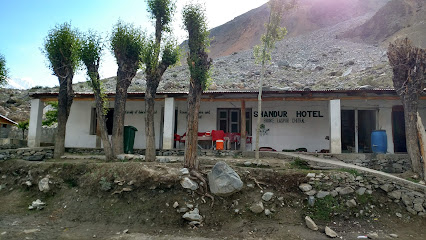
Shandur Shabab Hotel and Restaurant
Discover authentic flavors at Shandur Shabab Hotel and Restaurant in breathtaking Gilgit-Baltistan - where tradition meets stunning landscapes.
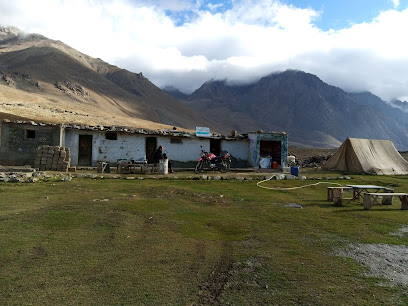
Shandur hotel and restaurant sor Laspur chitarl
Experience authentic local flavors at Shandur Hotel and Restaurant amidst breathtaking landscapes in Chitral, Khyber Pakhtunkhwa.

Markets, malls and hidden boutiques
Shandur National Park
Explore the breathtaking Shandur National Park, a hidden gem in Pakistan offering stunning landscapes, cultural experiences, and vibrant wildlife.

Shandur Polo Ground Ghizer Gilgit-Baltistan
Experience the thrill of polo at Shandur Polo Ground, the highest polo venue in the world, surrounded by breathtaking mountains and rich cultural heritage.
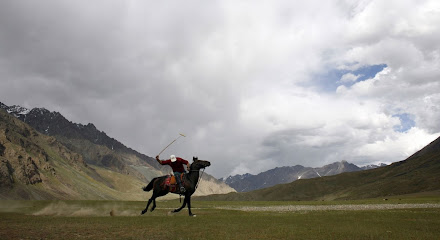
SARFARAZ SONS
Discover the heart of Chitral's local culture at Sarfaraz Sons, a vibrant grocery store offering fresh produce and authentic local flavors.
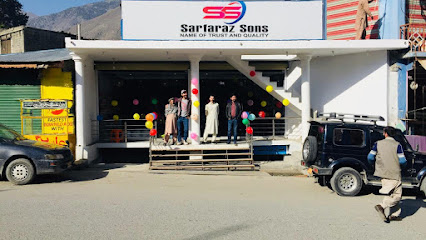
Shubinak Chitral
Explore Shubinak Chitral, where vibrant shopping meets the stunning beauty of Khyber Pakhtunkhwa's Chitrāl Valley.
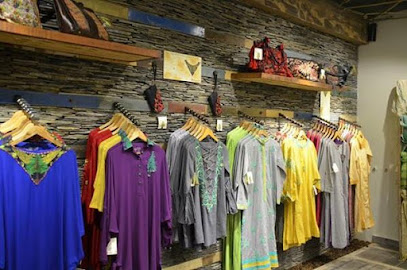
Doulat Garments
Explore Doulat Garments in Booni for unique clothing that reflects the rich culture of Upper Chitral, Khyber Pakhtunkhwa.
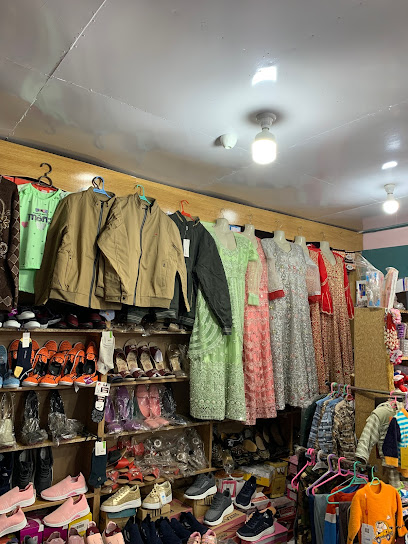
Jeet General Store Chapali
Experience local culture and charm at Jeet General Store Chapali, your go-to stop for essentials and unique treasures in Chitral.

Sardar General Store
Discover the vibrant world of shopping at Sardar General Store in Chitrāl, where local culture meets convenience.

Ladies shopping centre burushandah
Explore the vibrant cultural tapestry of Chitral at the Ladies Shopping Centre Burushandah, a premier women's clothing destination.

Chaudhary kariana and General store
Explore the charm of Chaudhary Kariana and General Store, your local hub for home goods and unique cultural finds.

Burushandah Mastuj
Discover the essence of Chitral's fashion at Burushandah Mastuj, where traditional craftsmanship meets contemporary style.

Shigri Zehr e Mora Gift Shop
Explore the charm of Gilgit-Baltistan at Shigri Zehr e Mora Gift Shop, where every antique tells a story and every visit is a journey through culture.

High Mountain Shop Skardu
Discover outdoor gear and local crafts at High Mountain Shop Skardu, your gateway to adventure in the breathtaking Gilgit-Baltistan region.

Inayat Khan General Store
Discover the charm of Booni at Inayat Khan General Store, offering local goods and a taste of Chitral's vibrant culture.
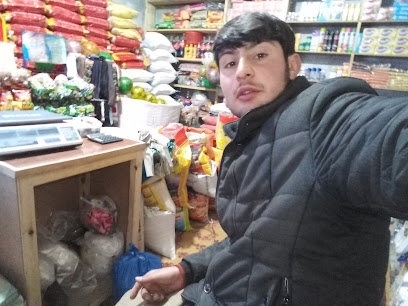
Chitral super store
Explore Chitral Super Store in Booni for a unique shopping experience filled with local treasures and everyday essentials.
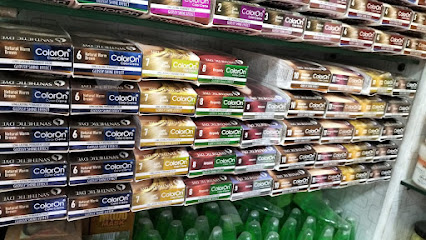
Sana Ullah General Store
Explore the essence of Chitral at Sana Ullah General Store in Booni, a charming stop for unique local products and cultural treasures.

Essential bars & hidden hideouts
Shandur Polo Ground Ghizer Gilgit-Baltistan
Explore the breathtaking Shandur Polo Ground in Gilgit-Baltistan, the highest polo ground in the world, where sport meets stunning natural beauty.

Shandur Hotel & Restaurant
Discover tranquility and adventure at Shandur Hotel & Restaurant, your gateway to the stunning landscapes of Chitral, Pakistan.

Shandur Shabab Hotel and Restaurant
Experience authentic local cuisine and stunning views at Shandur Shabab Hotel and Restaurant in the heart of Gilgit-Baltistan.

Phander Green Hotel & Restaurant
Experience the serene beauty and family-friendly hospitality of Phander Green Hotel & Restaurant in Gilgit-Baltistan's stunning landscapes.

THE PENINSULA PHANDER HOTEL AND RESTAURANT
Discover the exquisite flavors and breathtaking views at The Peninsula Phander Hotel and Restaurant, a must-visit culinary destination in Phander, Pakistan.

Nasir house ناصر ھاؤس
Discover the charm of Nasir House in Chitrāl, where local culture meets modern relaxation in a cozy bar atmosphere.
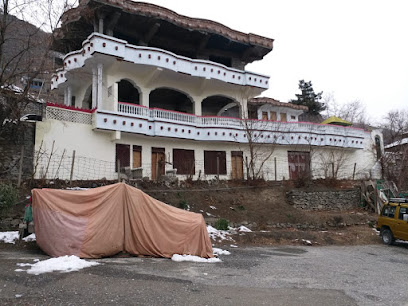
Cricket Ground Raman
Discover the thrill of cricket at Cricket Ground Raman, a vibrant sports bar nestled in the breathtaking Chitral valley of Khyber Pakhtunkhwa, Pakistan.

Nasir farm house kuju kpk chitral
Discover the serene beauty of Nasir Farm House in Chitral, where nature meets comfort in the heart of Khyber Pakhtunkhwa.
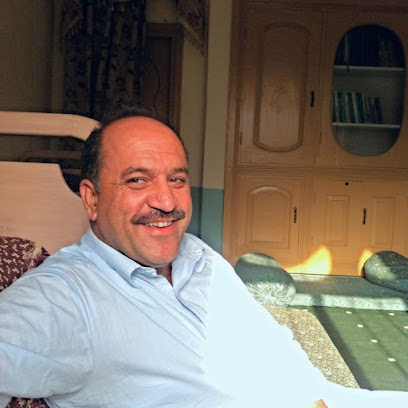
Shah Restaurant
Experience the authentic flavors of Pakistani cuisine at Shah Restaurant in Chitral, a culinary gem nestled in the heart of Khyber Pakhtunkhwa.

Chumarkhan Inn
Discover the authentic flavors of Khyber Pakhtunkhwa at Chumarkhan Inn, a culinary oasis surrounded by breathtaking mountain views.

Madina hotel and restaurant phander
Savor the authentic flavors of Gilgit at Madina Hotel and Restaurant, a culinary gem near Jammia Masjid offering traditional Pakistani dishes.

Ali Shan Blue Pakistani Restaurant
Discover the rich flavors of Pakistan at Ali Shan Blue Restaurant in Parwak Village, a must-visit culinary destination.
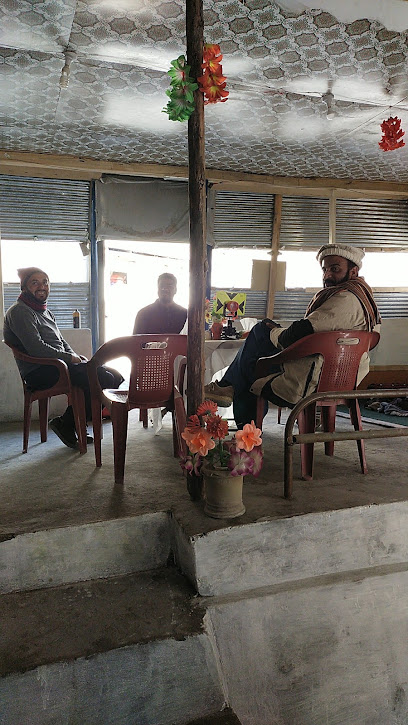
shams ur rehman furniture house
Experience local culture and vibrant nightlife at Shams Ur Rehman Furniture House, Chitral's unique bar blending tradition and modernity.

Shandur hotel and restaurant sor Laspur chitarl
Experience the rich flavors of chicken dishes at Shandur Hotel and Restaurant, nestled in the scenic Chitral region of Pakistan.

Faheem generalstore
Discover the essence of Drosh at Faheem Generalstore, where local culture meets unique shopping experiences in the heart of Chitral.

Local Phrases about Shandur Top
-
- Helloسلام
[salaam] - Goodbyeخدا حافظ
[khuda hafiz] - Yesہاں
[haan] - Noنہیں
[nahin] - Please/You're welcomeبراہ کرم
[barah-e-karam] - Thank youشکریہ
[shukriya] - Excuse me/Sorryمعذرت خواہ ہوں
[maazrat khwah hoon] - How are you?آپ کیسے ہیں؟
[aap kaise hain?] - Fine. And you?ٹھیک ہوں۔ آپ سنا؟
[theek hoon. aap suna?] - Do you speak English?کیا آپ انگریزی بولتے ہیں؟
[kya aap angrezi boltay hain?] - I don't understandمیں نہیں سمجھا
[main nahin samjha]
- Helloسلام
-
- I'd like to see the menu, pleaseبراء میں مینو دکھانا چاہتا ہوں
[bara mein menu dikhana chahta hoon] - I don't eat meatمیں گوشت نہیں کھاتا
[main gosht nahin khaata] - Cheers!چیئرز!
[cheers!] - I would like to pay, pleaseبراء میں ادا کرنا چاہتا ہوں
[bara mein ada karna chahta hoon]
- I'd like to see the menu, pleaseبراء میں مینو دکھانا چاہتا ہوں
-
- Help!مدد!
[madad!] - Go away!دور ہو جاؤ!
[door ho jao!] - Call the Police!پولیس کو بلاؤ!
[police ko bulao!] - Call a doctor!ڈاکٹر کو بلاؤ!
[doctor ko bulao!] - I'm lostمیں گم ہو گیا ہوں
[main gum ho gaya hoon] - I'm illمیں بیمار ہوں
[main bimar hoon]
- Help!مدد!
-
- I'd like to buy...براء خریدنا چاہتا ہوں...
[bara kharidna chahta hoon...] - I'm just lookingمیں صرف دیکھ رہا ہوں
[main sirf dekh raha hoon] - How much is it?یہ کتنا ہے؟
[ye kitna hai?] - That's too expensiveیہ بہت مہنگا ہے
[ye bohat mehnga hai] - Can you lower the price?کیا آپ قیمت کم کرسکتے ہیں؟
[kya aap qeemat kam kar sakte hain?]
- I'd like to buy...براء خریدنا چاہتا ہوں...
-
- What time is it?وقت کیا ہوا ہے؟
[waqt kya hua hai?] - It's one o'clockایک بجے ہیں
[aik bajay hain] - Half past (10)(10) کو تیسرے بجے
[(10) ko teesray bajay] - Morningصبح
[subah] - Afternoonدوپہر
[dopahar] - Eveningشام
[shaam] - Yesterdayگزشتہ کل
[guzishta kal] - Todayآج
[aaj] - Tomorrowکل
[kal] - 1ایک
[aik] - 2دو
[do] - 3تین
[teen] - 4چار
[chaar] - 5پانچ
[paanch] - 6چھے
[chhe] - 7سات
[saat] - 8آٹھ
[aath] - 9نو
[no] - 10دس
[das]
- What time is it?وقت کیا ہوا ہے؟
-
- Where's a/the...?یہاں کہاں ہے...؟
[yahan kahan hai...?] - What's the address?پتہ کیا ہے؟
[pata kya hai?] - Can you show me (on the map)?کیا آپ مجھے دکھا سکتے ہیں (نقشہ پر)؟
[kya aap mujhe dikhha sakte hain (naqsha par)?] - When's the next (bus)?اگلی (بس) کب ہے؟
[agli (bus) kab hai?] - A ticket (to ....)ایک ٹکٹ (کو ...)
[aik ticket (ko ...)]
- Where's a/the...?یہاں کہاں ہے...؟
History of Shandur Top
-
Shandur Top, known as the 'Roof of the World,' is located in the Gilgit-Baltistan region of Pakistan. At an elevation of 3,700 meters, it serves as a strategic pass connecting the Ghizer District of Gilgit-Baltistan and Chitral District of Khyber Pakhtunkhwa.
-
Historically, Shandur Top was part of ancient trade routes that connected the Indian subcontinent with Central Asia. Traders and caravans would traverse these high-altitude plains to trade goods like silk, spices, and precious stones.
-
Shandur Top is best known for its annual polo festival, a tradition that dates back to the early 20th century. The Shandur Polo Ground, situated at the highest altitude in the world, hosts teams from Chitral and Gilgit-Baltistan in a spirited competition that draws spectators from around the globe.
-
During British colonial rule in the Indian subcontinent, Shandur Top caught the attention of British officers who promoted polo as a means of fostering camaraderie and sportsmanship among the local tribes. The British influence helped formalize the annual polo festival.
-
Shandur Top holds immense cultural significance for the people of Gilgit-Baltistan and Chitral. The polo festival is not just a sporting event but a celebration of local culture, featuring traditional music, dance, and cuisine.
-
In 1936, the first polo match was organized under the supervision of British Major Evelyn Hey Cobb. This event laid the groundwork for what would become the annual Shandur Polo Festival. The agreement between the rulers of Chitral and Gilgit-Baltistan established the rules and traditions that continue to this day.
-
Shandur Top's location has given it geopolitical importance over the centuries. It has served as a buffer zone and a point of contention between various regional powers, including the princely states of Chitral and Hunza.
-
The area around Shandur Top is rich in biodiversity, home to unique flora and fauna adapted to high-altitude conditions. Conservation efforts are ongoing to protect this fragile ecosystem, which is also a draw for eco-tourists and researchers.
Shandur Top Essentials
-
Shandur Top is located in the northern part of Pakistan, near the border of Gilgit-Baltistan and Khyber Pakhtunkhwa. The nearest major cities are Gilgit and Chitral. You can reach these cities by air through Gilgit Airport or Chitral Airport, both of which have flights from Islamabad. From Gilgit or Chitral, you can hire a 4x4 vehicle or take a local bus to Shandur Top. The journey from Gilgit or Chitral to Shandur Top typically takes around 6 to 8 hours by road, depending on weather and road conditions.
-
Given the rugged terrain, a 4x4 vehicle is recommended for travel around Shandur Top and its surrounding areas. Local buses and shared jeeps are available but may not be as reliable or comfortable. Renting a car with a driver who is familiar with the area is a popular option among tourists. Walking and hiking are common ways to explore the immediate vicinity, so bring good-quality hiking boots.
-
The official currency in Pakistan is the Pakistani Rupee (PKR). Credit cards are generally not accepted in remote areas like Shandur Top, so it is important to carry enough cash for your trip. ATMs are available in larger towns like Gilgit and Chitral, but it is wise to withdraw sufficient cash before heading to Shandur Top. Keep smaller denominations handy for local transactions.
-
Shandur Top is generally safe for tourists, but standard precautions should be taken. Avoid traveling alone at night and keep valuables secure. There are no specific high-crime areas targeting tourists, but always stay vigilant. Be cautious of the rugged terrain and unpredictable weather, which can pose risks. It is also advisable to inform someone of your travel plans and expected return time.
-
In case of emergency, the nearest medical facilities are in Gilgit or Chitral. It is advisable to have comprehensive travel insurance that covers medical emergencies and evacuation. For immediate assistance, contact local authorities or your country's embassy in Pakistan. Carry a basic first-aid kit and emergency contact numbers. Satellite phones can be useful as mobile reception may be unreliable in remote areas.
-
Fashion: Do dress modestly. Men should avoid wearing shorts and women should wear long skirts or trousers and cover their heads with a scarf. Religion: Do respect local customs and religious practices. Avoid public displays of affection. Public Transport: Do be respectful and courteous. Don't engage in loud conversations. Greetings: Do greet people with a warm 'Assalamu Alaikum' and a handshake. Eating & Drinking: Do try local dishes and accept food graciously. Don't refuse hospitality, as it can be considered impolite.
-
To experience Shandur Top like a local, visit during the annual Shandur Polo Festival, which usually takes place in July. This event showcases traditional polo matches and local culture. Engage with locals and learn about their traditions and way of life. Bring a good quality camera to capture the stunning landscapes. Be prepared for cold weather, even in summer, and pack accordingly.
Nearby Cities to Shandur Top
-
Things To Do in Swat
-
Things To Do in Gilgit
-
Things To Do in Naran
-
Things To Do in Kaghan
-
Things To Do in Abbottabad
-
Things To Do in Peshawar
-
Things To Do in Murree
-
Things To Do in Islamabad
-
Things To Do in Rawalpindi
-
Things To Do in Skardu
-
Things To Do in Kabul
-
Things To Do in Vahdat
-
Things To Do in Jammu
-
Things To Do in Dushanbe
-
Things To Do in Sialkot







